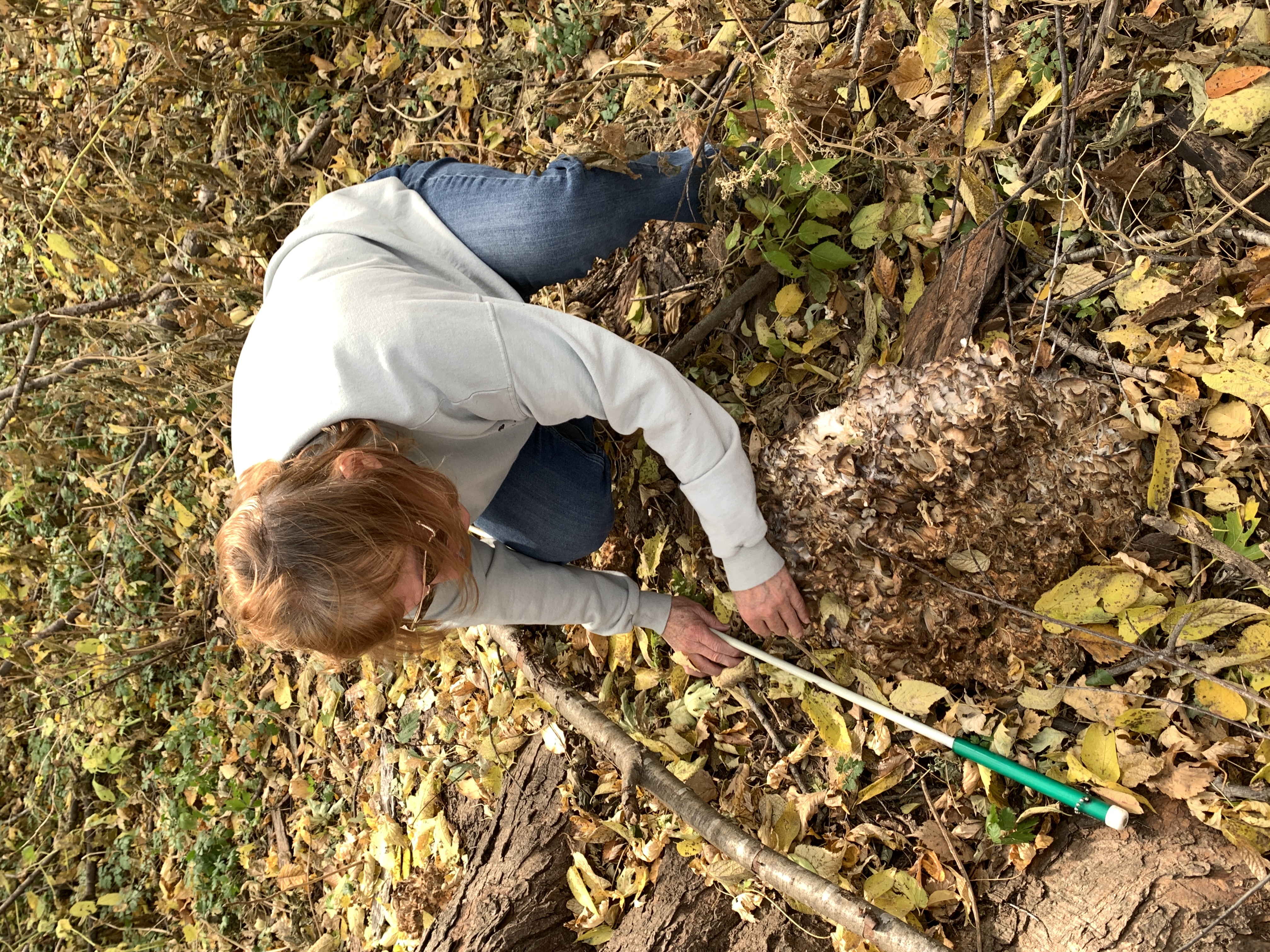There’s a venerable old silver maple standing proud and strong in the woods on Owl Acres. It’s probably the largest and oldest tree on the place. At its feet colonies of mushrooms spring up every fall. The colonies vary in size but average around a foot in diameter. One common name for this mushroom is hen-of-the-woods. Other names are ram’s head mushroom, sheep’s head mushroom, or maitake mushroom. This latter name is Japanese and means dancing mushroom. Its scientific name is Grifola frondosa. Grifola is from the Latin meaning intricate or braided. Frondosa refers to its leaf-like overlapping caps.
Each colony of mushrooms forms a rosette of sorts, radiating out from a central stem. Overlapping caps form a dense, circular mass. The caps are thin and frilly, reminding some of tongues, or of the feathers of a chicken. They’re gray to brown in color and range in size from 1.5 to 4 inches across. The underside of the mushroom is fleshy and white with tiny pores. The pores are openings of a network of tubes in the mushroom caps where spores are developed and then released.
The mushrooms appear each year in late summer or early fall. They have a sweetish scent when they’re fresh but that turns to something unpleasant as the mushroom deteriorates. The mushrooms are large and can readily weigh up to 100 pounds. They sprout from underground structures of the mycelium (the body of the fungus) and their job is to be the fruiting bodies, sending out spores to colonize more trees. Generally they prefer oak trees, but ours apparently noted that there aren’t any oaks in our woods per se so took the maple instead.
Hen-of-the-woods or maitake mushrooms are prized for eating. They are easy to identify as only one other species, Meripilus sumstinei looks anything like it, and that one turns black just for touching it.
Maitake mushrooms have for millennia been used as medicine in Japan and China. They have ben used in cancer treatments as well as remedies for palsy, nerve pain, and arthritis.
As beneficial as this mushroom might be for food and medicine, it is not so good for its host. Hen-of-the-woods is a parasite, feeding on the roots of its host. As a non-mycorrhizal fungus, it doesn’t bother to bring water and nutrients to the tree like mycorrhizal fungi do. Instead, it sends its hyphae (thread-like tubes that reach out from the main fungal body) into the base of the tree and begins breaking down the lignin. (Lignin is the substance that binds the fibers, vessels and cells of wood and gives it its strength.) After a relatively long time, white, mushy pockets of decay form inside the base of the tree. Eventually, over the course of decades, the rot will spread and the tree will die. During that process, the mushrooms will appear each year.
Hen-of-the-woods, known in the context of food and medicine as maitake mushrooms, are grown commercially with great success on sawdust logs. Here there’s all the lignin they want but no living tree to destroy.
We haven’t harvested our hen-of-the-woods when it’s young enough to be tasty. Unfortunately, we wait to think of it when it’s all leathery and dry and starting to smell. Maybe next year we’ll remember to try it out. Meanwhile the silver maple looks strong and healthy for now.
Photo by Author. Alt text: Karen inspects a large, 18-inch-wide mass of mushroom fruiting bodies at the base of a silver maple tree on Owl Acres. Hen of the Woods is past its vegetative stage for the season (meaning, no mushrooms for us this year).

1 comment
I have to agree: they don’t look too appetizing at this stage. Thanks for the info. – Joe